
| What is Flavor and Fortune? |
| How do I subscribe? |
| How do I get past issues? |
| How do I advertise? |
| How do I contact the editor? |
Read 12910714 times
Connect me to:
| Home |
| Articles |
| Book reviews |
| Letters to the Editor |
| Newmans News and Notes |
| Recipes |
| Restaurant reviews |
| Article Index (all years, slow) |
| List of Article Years |
| Article Index (2025) |
| Article Index (last 2 years) |
| Things others say |
| Related Links |
| Log In... |
| Authors |
| Categories & Topics |
Noodles at Chinese Pompeii
| by Harley Spiller |
Food in History
Winter Volume: 2006 Issue: 13(4) page(s): 5, 34, and 35
October 2005, just before I left New York for pasta-reverent Rome, word came out that geologists had uncovered a very, very old bowl of noodles. Word had it, the Italians are in a state of disbelief.
Twenty-inch-long pasta was found in Lajia, on the Yellow River in Northwest China. This archaeological site is often referred to as 'Chinese Pompeii.' The yellow strands were nestled atop a cone of sediment in a bowl. Probably buried during a catastrophic flood. These fragile noodles were preserved because the upturned earthenware formed a vacuum eliminating air when it filled with a sediment of fine brown clay. Radiocarbon dating indicates the food is about 4000 years old.
BBC News quoted Professor Houyuan Lu, part of the lucky team of geologic researchers from the Chinese Academy of Sciences in Beijing saying: "Prior to the discovery of noodles at Lajia, the earliest written record of noodles is traced to a book written during the East Han Dynasty sometime between 25 CE and 220 CE. Although it remains a subject of debate whether the Chinese, the Italians, or the Arabs invented it first, our discovery indicates that noodles were first produced in China."
Try as we might, images on the web came with caveats not allowing copying without permission. Therefore, we recommend going to www.snbc.msn.com/ID671263 and eleswhere, or to past newspapers. For example, there was a picture in Newsday on October 13, 2005, see them there for yourself.
Professor Lu and his team say the long-lasting noodles resembled lar mien (tossed noodles), hand pulled wheat pasta very much akin to Italy's renowned spaghetti (small strings). The team analyzed the shape and patterning of the starch grains and seed-husk phytoliths (minute particles of mineral matter formed by living plants and fossilized in rock). Their research pointed to the use of two millet, foxtail--Setaria italica, and broomcorn--Panicum miliaceum. Both are domesticated grasses native to China. Is the fact that foxtail millet's Latin name translates as 'Italian millet' pure irony or an important clue to the origins of pasta?
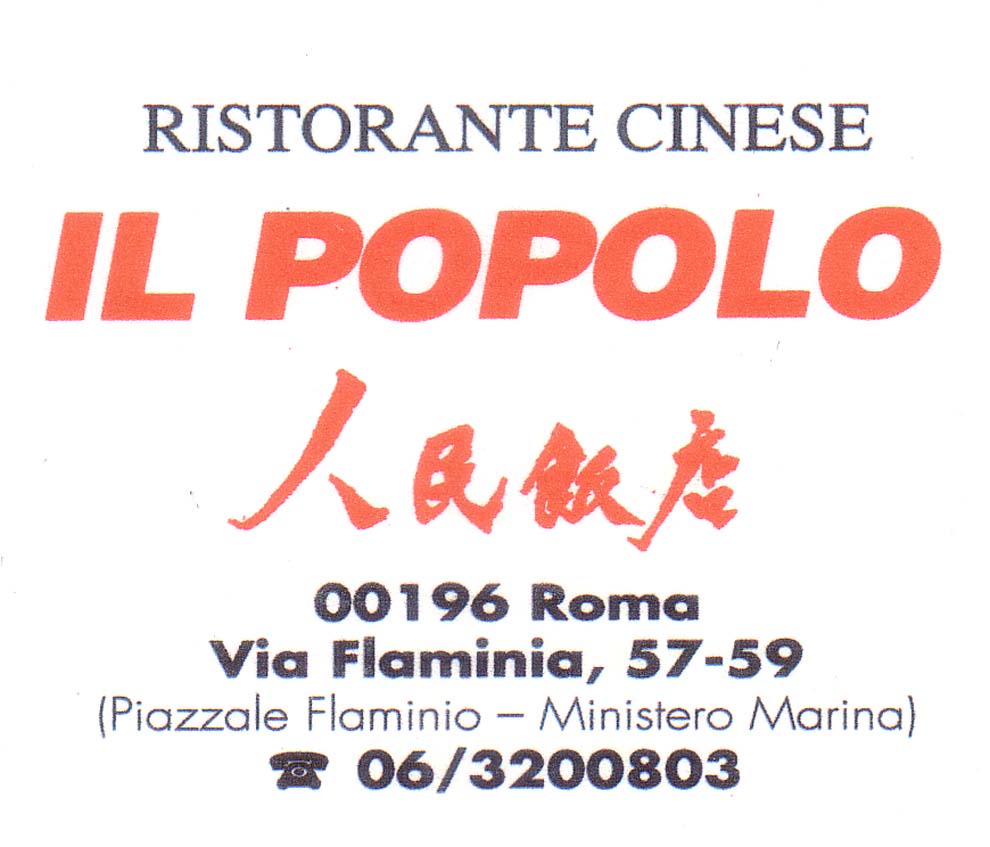 I wonder what Fabio Parasecoli would say. He is the New York bureau chief for the Italian food glossy Gambero Rosso which means red shrimp. He wrote the article titled: Chinese Food Ways in Italy in Flavor and Fortune's Volume 12(2) providing thorough, essential, and accurate background information on Chinese cuisine in Italy.
I wonder what Fabio Parasecoli would say. He is the New York bureau chief for the Italian food glossy Gambero Rosso which means red shrimp. He wrote the article titled: Chinese Food Ways in Italy in Flavor and Fortune's Volume 12(2) providing thorough, essential, and accurate background information on Chinese cuisine in Italy.
When I mentioned the amazing discovery with locals I met in Italy, more than once I heard the cry, only half-joking, "that is a fake." As proof, one kind Roman said that the Lajia noodles had turned to dust the moment they were handled. He then directed me to the National Museum of Pasta Foods, a new Italian museum covering nine centuries of the history of the Italian 'First Course' at: www.pastainmuseum.com
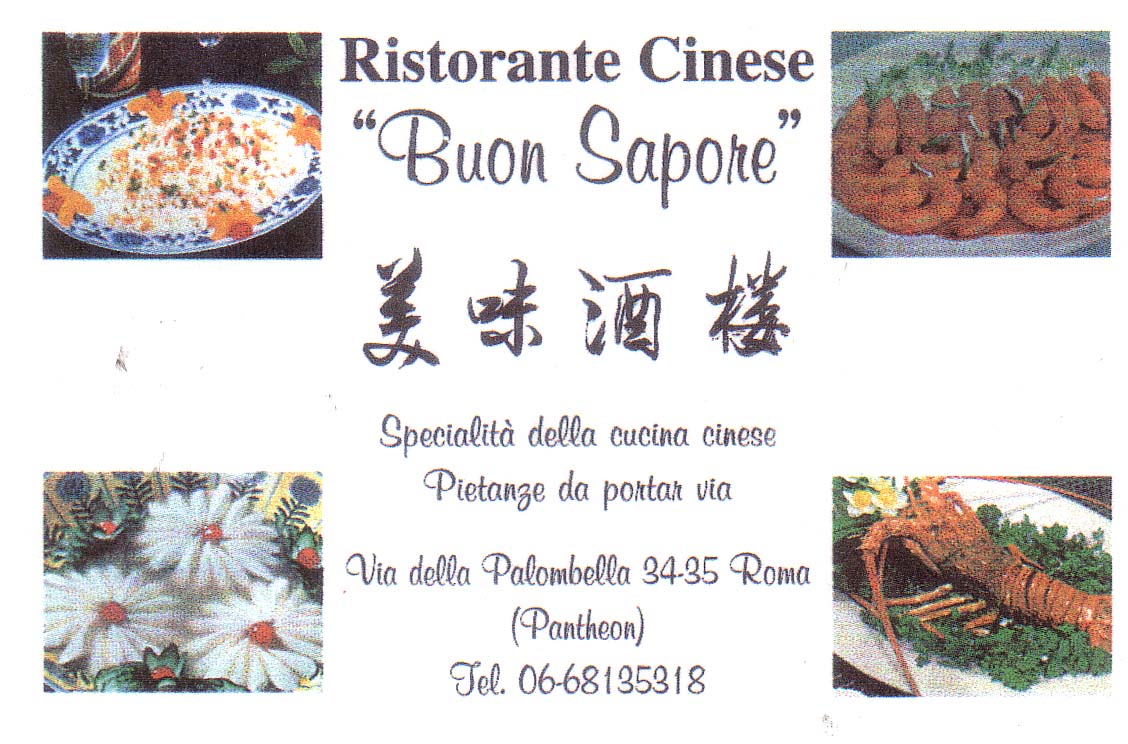 The manicotti museum's mission is no less than to 'make a contribution towards solving or at least alleviating the still unsolved problem of denutrition in the world, by extending the culture of pasta, this precious national dish.' Their literature does not go so far as to claim that pasta belongs to Italy, but does claim that dry noodles are a "purely Italian invention" responsible for pasta's circulation to all the corners of earth. The literature continues, noting that Italy was the first country "to demonstrate how a basically poor country has succeeded in using its own resources to the utmost, making a virtue of necessity and creating a balanced and complete way of eating, using the most traditional of its crops."
The manicotti museum's mission is no less than to 'make a contribution towards solving or at least alleviating the still unsolved problem of denutrition in the world, by extending the culture of pasta, this precious national dish.' Their literature does not go so far as to claim that pasta belongs to Italy, but does claim that dry noodles are a "purely Italian invention" responsible for pasta's circulation to all the corners of earth. The literature continues, noting that Italy was the first country "to demonstrate how a basically poor country has succeeded in using its own resources to the utmost, making a virtue of necessity and creating a balanced and complete way of eating, using the most traditional of its crops."
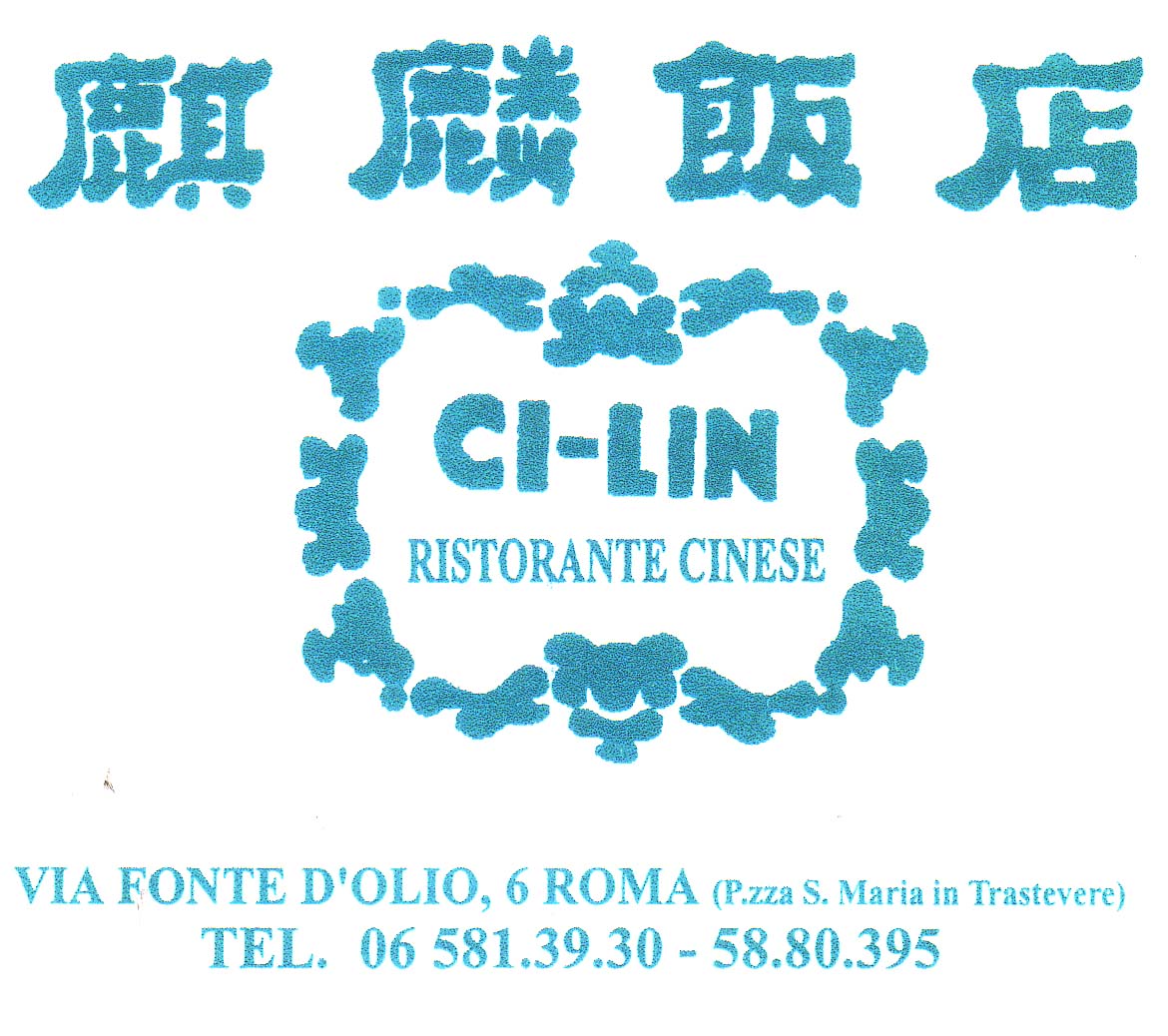 There is no mention of China’s exciting discovery at this museum hard by Fontana di Trevi, but there was Chinese food near all of Rome's major tourist attractions, some solo per poche settimane or only for a few weeks. One, to be precise, Chinese-American food from McDonalds.
There is no mention of China’s exciting discovery at this museum hard by Fontana di Trevi, but there was Chinese food near all of Rome's major tourist attractions, some solo per poche settimane or only for a few weeks. One, to be precise, Chinese-American food from McDonalds.
This international fast-food gorilla was featuring a special 'Sapori D’Oriente' (or Chinese flavors) menu in honor of the 2008 Summer Olympics in Beijing. A picture later in this article shows the 'McMenu Orientale' featuring an 'Asian Burger,' which looked like McD's standard burger except for the Chinese character embossed on the bun. There are 'potato-san' or French Fried potato discs instead of the usual rectangular chips, and Coca Cola in a paper cup featuring a tai chi artist practicing his 'snake creeps down' move. The chain was also featuring a McMenu Gamberi-Zen, with fried shrimp and a yellow dip, plus Dragon Shakes and sfogliatine primavera or spring rolls with a fancy name invoking the luscious classical Neapolitan multi-layered pastry sfogliatelle. Not many Romans were being swayed by the new pan-Oriental offerings.
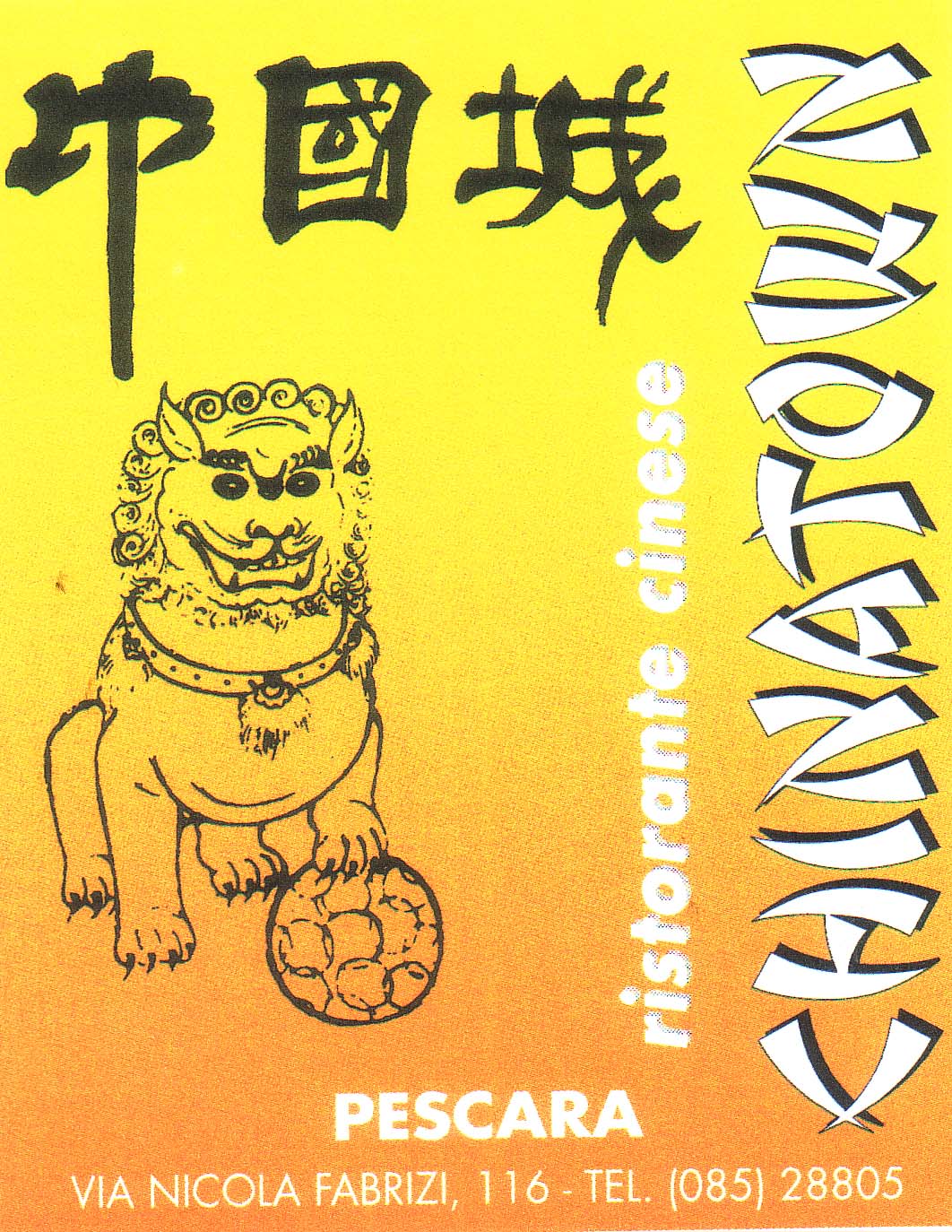 The number one foreign meal in Italy’s deservedly ethnocentric food culture is kebab. Middle-Eastern food shops far outnumber those of Italy's foodie neighbor, France, whose cuisine is by and large shunned in 'The Boot.' Japanese tastes are also hard for Italians to accept, and so the second most popular foreign cuisine is Italo-Chinese.
The number one foreign meal in Italy’s deservedly ethnocentric food culture is kebab. Middle-Eastern food shops far outnumber those of Italy's foodie neighbor, France, whose cuisine is by and large shunned in 'The Boot.' Japanese tastes are also hard for Italians to accept, and so the second most popular foreign cuisine is Italo-Chinese.
An Italian chef told me that the most popular dishes are Involtini Primavera (spring rolls); Riso Cantonese (fried white rice with eggs, peas and ham), Spaghetti di Soia (very tiny white noodles with minced meat, carrots and assorted vegetables), and Chicken with Almonds and Bamboo Shoots. Upscale places have done a good job of selling Italians on the Cantonese method of steaming whole lobsters Cantonese, and have popularized shrimp with mild chile sauce.
Rome does not have a large Chinese community. The area around Termini, the central train and bus station, has long been populated by recent immigrants to Rome. There you will find many Africans, Muslims, Indians and Chinese. Nearby lies Piazza Vittorio Emanuele II and Via Machiavelli, home to three Chinese stores in a row. One is a traditional herbal pharmacy, another internet and videogame parlor, and the third a Shanghainese-inflected restaurant featuring a bountiful display of prepared cold appetizers.
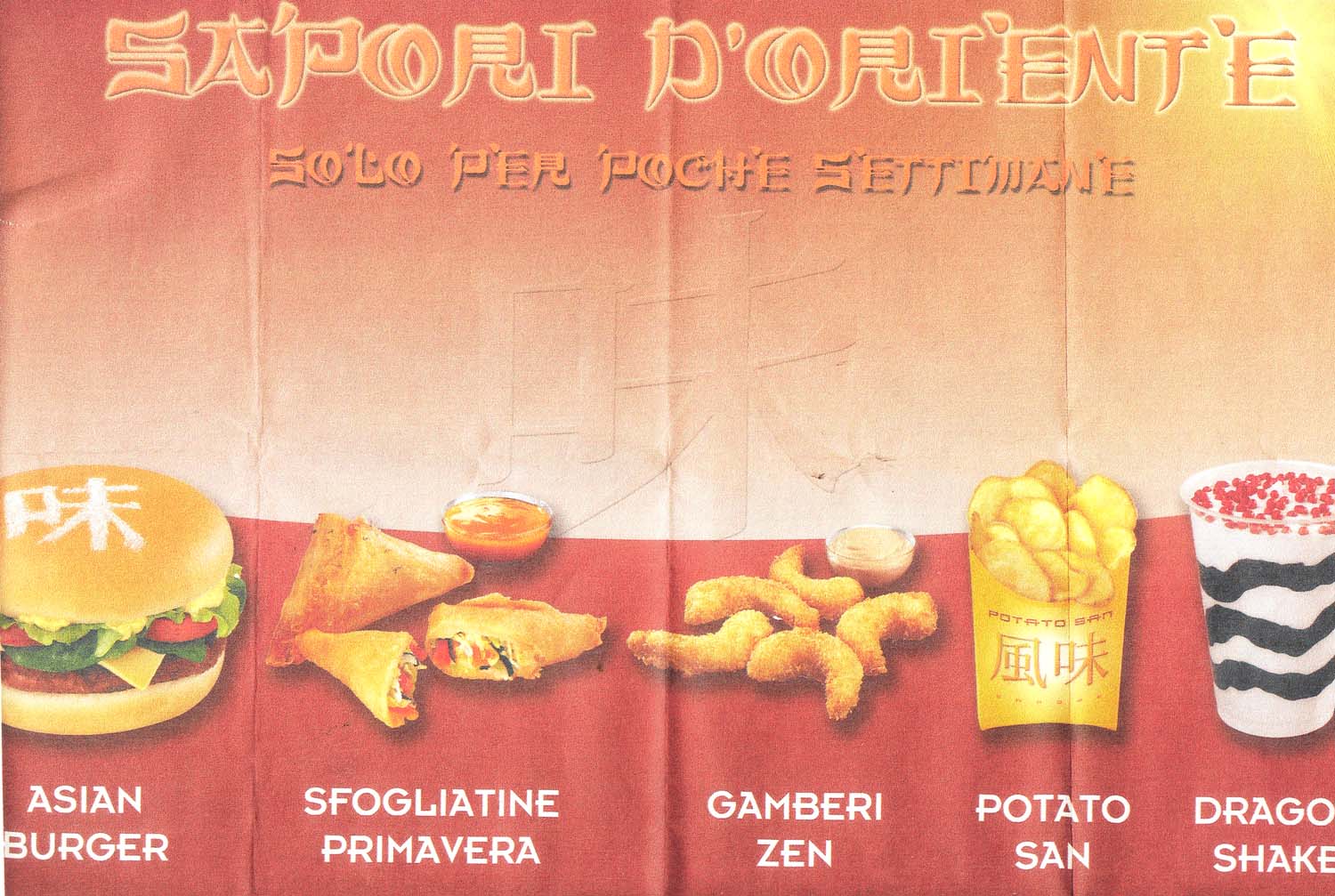 Chinese restaurants dot the city's seven hills sparsely. Fancy HUA QUIAO on via G. Giolitti 185/195, has a bilingual Chinese-Italian menu and very good smelling hot and sour soup. I thought cross-cultural names could get no better than RISTORANTE CINESE IL POPOLO on Via Flaminio, but popolo does not mean Pope, it translates as 'people.' Upscale places like BUON SAPORE at via della Palombella 34-35 near the Pantheon have elegant dining rooms and they specialize in Chinese cuisine ready to take out. Elsewhere, in neighborhoods like trendy riverside Trastevere, places like Piazza Santa Maria’s CI-LIN RISTORANTE CINESE at this piazza have more casual atmospheres but nothing more than the run-of-the-mill Cantonese offerings found across Italy.
Chinese restaurants dot the city's seven hills sparsely. Fancy HUA QUIAO on via G. Giolitti 185/195, has a bilingual Chinese-Italian menu and very good smelling hot and sour soup. I thought cross-cultural names could get no better than RISTORANTE CINESE IL POPOLO on Via Flaminio, but popolo does not mean Pope, it translates as 'people.' Upscale places like BUON SAPORE at via della Palombella 34-35 near the Pantheon have elegant dining rooms and they specialize in Chinese cuisine ready to take out. Elsewhere, in neighborhoods like trendy riverside Trastevere, places like Piazza Santa Maria’s CI-LIN RISTORANTE CINESE at this piazza have more casual atmospheres but nothing more than the run-of-the-mill Cantonese offerings found across Italy.
Roman cuisine left no room or desire for Chinese food. It was not until we drove across the mountains a few hours eastward to the coast that we ate anything from the Central Kingdom. We were escorted to Chinatown in Pescara, an old town of one hundred fifty thousand folk on the shores of the Adriatic near the Silver Triangle, so named for three towns built around the industry of oil made from shimmering silver-leafed olive trees. Chinatown here is not a neighborhood; rather, it is the name of the best of Pescara's seven or eight Chinese restaurants.
Our friendly server hailed from Guangzhou, but true to Parasecoli's prediction, the mono-lingual chef and management at Chinatown are from Wenzhou county in China's Zhejiang province. Wenzhou natives are renown for both their tasty wantons and for their business acumen. Most supermarkets in Flushing are owned by Wenzhou people. It is hard to walk by the gorgeous fishtank at this large and well-appointed restaurant in the heart of Pescara's booming shopping district called CHINATOWN at via Nicola Fabrizi 116.
Chinatown's candle-topped tables were set with plain bamboo chopsticks, forks, knives, salt, pepper, an extra-large portion of duck sauce, hot chile oil, and soy sauce in a former vinegar cruet. Just as reported by Professor Parasecoli, the Chinese menu is re-categorized to resemble a traditional Italian menu. There are antipasti (appetizers), primo piatti (first courses of pasta), secondi piatti (second courses of meat), and so forth.
We started with a complimentary plum wine, which substituted nicely for limoncello, the classic Italian starter made of lemon peels of the isle of Capri. The full bar also pours beer from China, their Tsingtao, and Denmark's Carlsberg. The Italian and English menu has only three Chinese characters, the name of the restaurant. Their menu translations can be as inept as anywhere else in the Chinese diaspora. For example, Chinatown uses the unappetizing term 'raw' to describe a tofu dish. In actuality their tofu is cooked and served cool with a dressing of scallions and soy sauce. The medium-firm bean curd was perfectly prepared. My dining companions thoroughly enjoyed the dish but when they learned for the first time that the rectangular blocks are made of soy beans, they queried incredulously, "How can beans be square?"
Appetizers (antipasti) popular in Italy are the same as those favored in the United States, spring rolls, shrimp toast, shrimp chips, pork dumplings, and steamed shrimp dumplings known in Italian as ravioli al vapore con gamberi. Chinatown's green-pea and shredded carrot-studded shrimp siu mai were a frozen doughy mess. Over-pureed shrimp was but the start of the problem. The pork fried dumplings, conversely, were A-OK, a bit oily with a broken skin here and there but not bad. Spring rolls were fried to greaseless perfection, alas they contained only cabbage and a tiny bit of carrot. I guess they are just right for sopping up the sugary-gold duck sauce.
Asterisks on the menu revealed that every single seafood item was frozen--such indications are common throughout Italian restaurants where government food labeling restrictions are stringent. If only the government could straighten out the kitchen's confused and haphazard use of 'calamari,' 'octopus,' 'squid' and 'cuttlefish.' Sadly, there are no whole fish here seaside; the squid is too salty, and the sizzling prawns failed to spatter at all.
The sparse use of ginger and scallion is apparently endemic to Italo-Chinese cuisine. Irregardless, hands down the best dish of the night was spicy beef with wood ear fungus, peppers and onion. Next time we will try some more meat dishes, like the mysterious Pork Za Zai and veal, a preferred Italian protein, here served with 'Chinese Sauce.'
Although there are no fresh Chinese veggies among Chinatown's four vegetable dishes (the bean sprouts are canned and the seaweed dried), there is a Chinese man in town who plants and grows real Chinese vegetables to sell. He makes rounds to Pescara’s Chinese restaurants every Saturday. Some local restaurants also grow their own vegetables and Chinatown’s maitre d' informed us that winter melons, green chives, bok choy, and baby bok choy do well here in the rolling hills between the seaside and the Alps.
Big new signs in this and almost every restaurant window in town proclaimed in Italian, 'We use local products exclusively' and the accompanying illustration of a chicken made it clear that fear of bird flu was the impetus for these claims. Undaunted, we had a very well roasted duck, meaty, crisp and nearly oil free. Chinatown's chicken dishes come in a wide variety of styles, with almonds, cashews, pineapple, lemon, or steamed with scallion. They even offer a spicy leg.
A wide variety of deserts are available, like lichees and longan, and many items that are not commonly fried, like ice cream, pineapple, banana, apple--even fried coconut cookies. There is something called yang mei (which translates as 'pretty sun') and pink-colored pasta di soia rossa fritta padella or fried soy noodles in a pan. All desserts can be washed down with ginseng rice wine from Jilin, here called 'Grappa di Ginseng.' The ginseng wine is renamed after Grappa, the Italian liqueur once made by a second pressing of grape skins, stems and seeds left after winemaking. Grappa has gone a long way from its origins as a castoff for peasants--it now adorns top shelves at the world's most expensive restaurants and bars. Is China's earthy ginseng liqueur next?
If there is one Italian cooking term that has become universal, it is 'al dente' which literally means 'to the tooth.' What it means in the kitchen is that pasta and rice are cooked so they are still chewy and toothsome. Chinatown knows they have to cook starches this way to please the locals, and their white rice, fried with lots of ham, egg, green peas, pineapple and pignoli nuts is scrumptious. Next time we will try one of Chinatown's more unusual entrées--fried rice with curry. We did however, just for fun, scare our local friends by sampling thin rice noodles stir-fried with soy and sprouts. The mild and tasty dish is having a hard time gaining a foothold in Italy because the Italian word for the noodles, vermicelli, translates to 'little worms.'
Next to lo mein, a perfect spaghetti substitute, the Chinese pasta dish that most closely resembles a true Italian pasta dish is chow ning goa or gummy stir-fried rice cakes not unlike Japanese mochi. In a nod to Italian potato-dumpling lovers, the dish is translated here as gnocchi di riso con carne, rice gnocchi (Italian for lump or knot) with meat. The dense billets of rice were perfect in texture, and oily just like in Shanghai. The only drawback was the use of carrot and celery instead of the more highly-flavored Chinese standard, simple mustard green pickle. Is it that Chinese restaurateurs always cater to local tastes or are they sometimes merely lax with tradition?
A century and a half ago the first industrial pasta factory in the United States was opened by none other than a Frenchman, in Brooklyn. Who knows, maybe someday they will find fossilized pasta in Rome, 'The Eternal City.' Perhaps some day an enterprising chef will cross cultures and create a Chinese lasagna. William Grimes of the New York Times once asked me to take Marcella Hazan on a tour of 'under-the-radar' Chinatown restaurants. We went to Dumpling House on Eldridge Street and I watched happily as a satisfied smile cross the face of the Italian cooking doyenne as she nibbled a luxurious steamed pork dumpling, using her fingers just like Beijingers do. It was only then I understood that simply delicious pasta is just that--it needs know no borders of time or space.
_____
Thanks to Gaetano, Hela, Luca, Mike, and Jay. Look for the author's collection of gelato spoons at the Smithsonian’s Cooper Hewitt National Design, part of the exhibition titled: Feeding Desire: Design and the Tools of the Table, 1500–2005. They are on view in New York from May 5th through October 29th, 2006.

Copyright © 1994-2025 by ISACC, all rights reserved
Address
3 Jefferson Ferry Drive
S. Setauket NY 11720